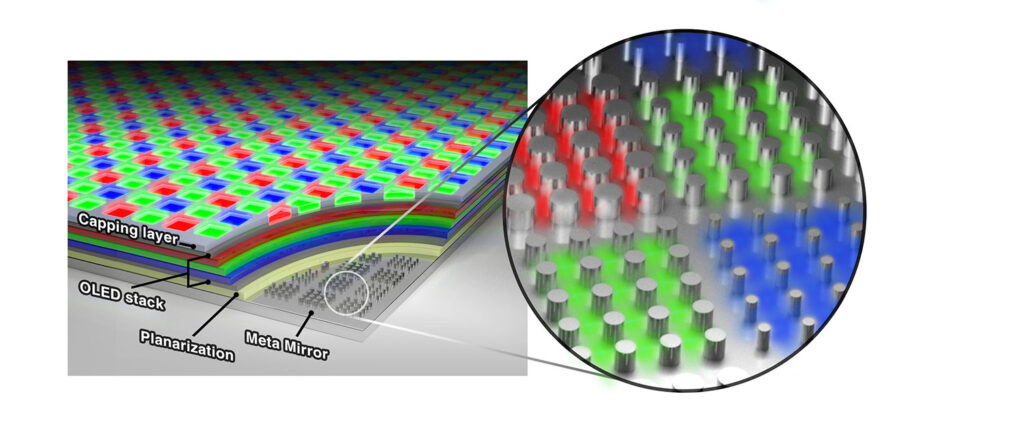Researchers from Stanford University and collaborators in Korea have developed a new architecture for OLED displays that could enable devices to have a resolution of up to 10,000 pixels per inch (PPI).
A technology describing this new technology appeared in Oct. 22 Science paper journal.
For example, today’s smartphones have around 400 to 500 PPI, just imagine how stunning will the phones be with this new technology.
Mark Brongersma, a materials scientist at Stanford in collaboration with the Samsung Advanced Institute of Technology (SAIT) made this new advancement possible. Brongersma was initially on this research path as he wanted to create an ultra-thin solar panel design.
“We’ve taken advantage of the fact that, on the nanoscale, light can flow around objects like water,” said Brongersma. “The field of nanoscale photonics keeps bringing new surprises and now we’re starting to impact real technologies. Our designs worked really well for solar cells and now we have a chance to impact next-generation displays.”
Not only a record-setting pixel density, the new “metaphotonic” OLED displays would also be brighter, have better colour accuracy and they’d be much easier and cost-effective to produce as well.
The new innovation behind this new OLED is a base layer of reflective metal with nanoscale corrugations, called an optical metasurface. The metasurface can manipulate the reflective properties of light and thereby allow the different colors to resonate in the pixels. These resonances are key to facilitating effective light extraction from the OLEDs.
The team has successfully produced miniature proof-of-concept of this technology. Compared with OLED used now in televisions, these pixels had a higher color purity and a twofold increase in luminescence efficiency. They also allow for an ultrahigh pixel density of 10,000 pixels-per-inch.
The next steps for integrating this work into a full-size display is being pursued by Samsung, and Brongersma eagerly awaits the results, hoping to be among the first people to see the meta-OLED display in action.
Journal Reference:
Won-Jae Joo, Jisoo Kyoung, Majid Esfandyarpour, Sung-Hoon Lee, Hyun Koo, Sunjin Song, Young-Nam Kwon, Seok Ho Song, Jun Cheol Bae, Ara Jo, Myong-Jong Kwon, Sung Hyun Han, Sung-Han Kim, Sungwoo Hwang, Mark L. Brongersma. Metasurface-driven OLED displays beyond 10,000 pixels per inch. Science, 2020 DOI: 10.1126/science.abc8530
Press Release: Stanford University

